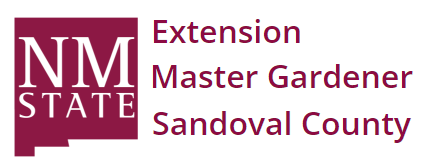Plant of the Month: Common Lilac

Although lilacs come in many colors, the most familiar is the purple.
Common Lilac
Scientific Name: Syringa vulgaris
Common Name: Lilac
Type: Perennial shrub
Family: Oleacea
Native Range: North America above latitude 48
Zone: 3-7
Height: 20 ft at maturity
Bloom Time: Early spring in NM
Bloom Description: purple
Sun: Full sun to part shade
Water: Medium
Maintenance: Medium
Suggested Use: Specimen planting or hedge
Flower: Fragrant
Leaf: green with medium texture
Attracts: Butterflies
Tolerate: CaCO3, pH 5.8- 7.8, moderate drought, and all soil textures
Culture
The ideal lilac shrub has about 10 canes. Although lilacs do come in seven different colors, the most familiar is the purple color of the common lilac, Syringa vulgaris, which blooms in New Mexico in early spring filling the breeze with its heavenly scent. Lilacs are very hardy, growing easily in zones 3-7, and are low maintenance. Minimal work is required to produce copious amounts of fragrant blooms each year. Growth is upward to 20 feet, but keeping it pruned so the annual blossom production is at eye level is truly a treat for the senses. The fragrant flowers are good for cutting and attractive to butterflies. The dense foliage for the rest of the season makes for a nice screen or a hedge between neighbors or different areas of a home landscape plan when planted 5-15 feet apart, depending on variety. Lilacs may be planted in spring or in fall.
Care
Each spring, apply a layer of compost under the plant, followed by mulch to retain moisture and control weeds. Apply water during the summer if rainfall is less than 1 inch per week. Lilacs won’t bloom if they’re over-fertilized with a nitrogen rich fertilizer. They can handle a handful of 10-10-10 in late winter, but no more. After the lilac bush has finished blooming, prune the bush to shape it, and remove suckers at the same time.
Pruning Lilacs
Lilacs bloom on old wood, so it’s critical to prune in the spring right after they bloom. Pruning later in the summer may be removing flower buds set for the next season. Every year after bloom, remove any deadwood. Prune out the oldest canes (down to the ground). Remove the small suckers. Cut back weak branches to a strong shoot. Cut back tall canes to eye height . If the lilac is old and in really bad shape, remove one third of the oldest canes (down to the ground) in year one, half of the remaining old wood in year two, and the rest of the old wood in year three. Another option for old lilacs is to chop the entire shrub back to about 6 or 8 inches high. It sounds drastic, but lilacs are very hardy. The downside to this option is that it takes a few years to grow back. The upside is less work and more reward, as the lilac will grow back bursting with blooms. It must be recognized that severe pruning results in the loss of blooms for one to three years. For these reasons, a wise pruning program aims to avoid severe and drastic cuts by giving the bushes annual attention.
Problems
Lilacs are prone to attack by slugs and snails. Powdery white mildew may appear in areas where summers are hot and humid which may be unsightly, but apparently does no harm to the shrub.
http://plants.usda.gov/core/profile?symbol=SYVU
http://www.almanac.com/plant/lilacs
http://www.gardeningknowhow.com/ornamental/shrubs/lilac/lilac-care-growing-and-planting-lilac-bush-plants.htm
